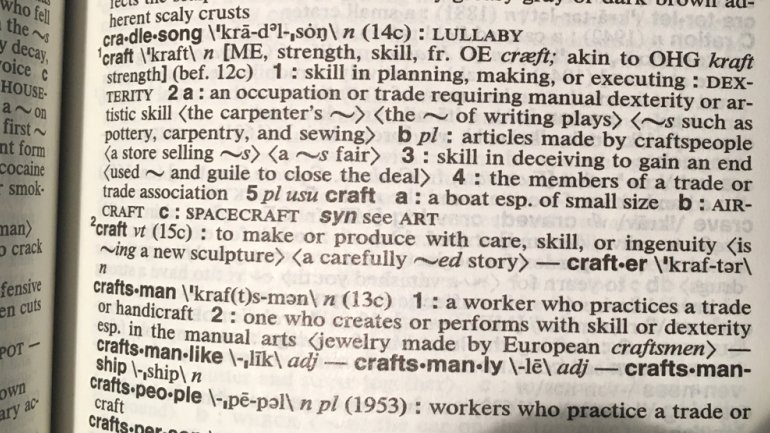"Craft" by Any Other Name
"Craft" by Any Other Name
It’s one of those memories that makes me cringe. I’d just finished a talk at a gallery about American Craft and the artists we cover, and a woman raised her hand. “What’s the difference between art and craft?” she asked. Without thinking, I groaned – loudly. She looked stricken, so I quickly apologized and went on to explain that, as far as the magazine is concerned, “craft” is generally three-dimensional, with at least a hint of function, and often made in glass, ceramics, wood, fiber, or metal.
Why did I groan? Because defining craft is treacherous. Many smart people have tried, of course, in some cases devoting entire books to the topic. I’ve read several of those books and found them fascinating. But I’ve yet to read anything that puts the question to rest. The problem is that today “craft” is embedded in everyday conversation; in our culture, it’s attached to everything from sewing to sausage to software. Even if a scholar makes a brilliant argument about the meaning of “craft,” chances are they’re speaking to a narrow slice of the population. For everyone else, “craft” will continue to have something to do with handwork, something to do with skill, and often – don’t shoot me – something done as a hobby. The point of language is to share meaning, and as Joyce Lovelace’s piece on the meaning of “craft” demonstrates, even people immersed in making don’t exactly agree on what the term means.
Until maybe 50 or 60 years ago, “craft” had a fairly clearcut definition among a certain group of Americans – involving livelihood, an element of function, and the five traditional mediums. That’s the definition every American Craft editor has worked from, more or less, since the magazine’s beginnings in 1941. But today, much of the work by artists connected to craft involves materials beyond the traditional five or uses a blend of them, and it may have no perceptible connection to function. Does “craft” still fit? Even leaders in the field see ambiguity in the term. When we asked Critical Craft Forum director Namita Gupta Wiggers what “craft” means to her, she answered, “Which craft is the craft to discuss here? Baskets or Art Basel – or everything in between?”
And as you move out from the concentric circles that surround the “craft field,” things get even fuzzier. In the wake of Martha Stewart, scrapbooking magazines, generations who’ve made lanyards at summer camp, and the rise of craft beer, all bets are off. Actor and woodworker Nick Offerman defines craft as “the skill developed, applied, and made manifest through practice and discipline in the fabrication of a work of art. Could be a chair, a lasagna, a painting, a symphony, or a monologue.”
Author and filmmaker Faythe Levine goes further, embracing the ambiguity: “I believe craft is anything you want it to be,” she writes. “It wields the power to be all things at once, with no rules.”
I don’t know about you, but I’d have trouble editing a magazine that features a painting on the cover for one issue and a lasagna on the next. Readers would be confused, too. To say nothing of “all things at once, with no rules.”
To paraphrase Supreme Court Justice Potter Stewart on a less edifying subject, maybe some people know craft when they see it. What do you think “craft” means? Send us a note at [email protected], or tell us on Twitter, Facebook, or Instagram using the hashtag #whatcraftmeans.




